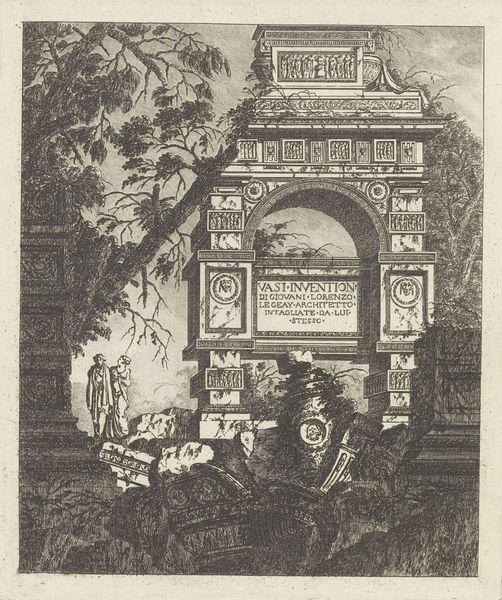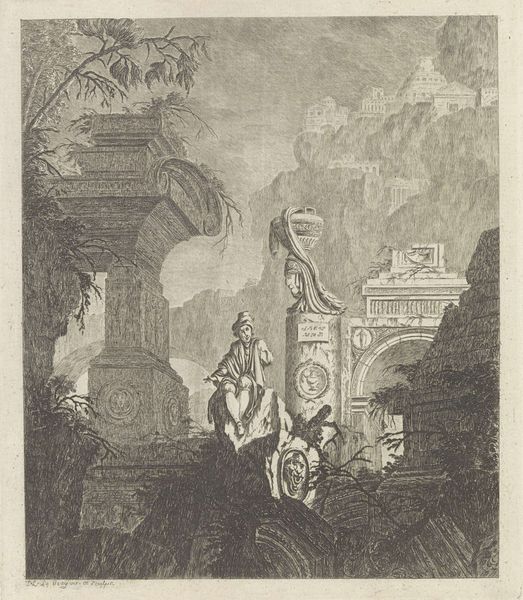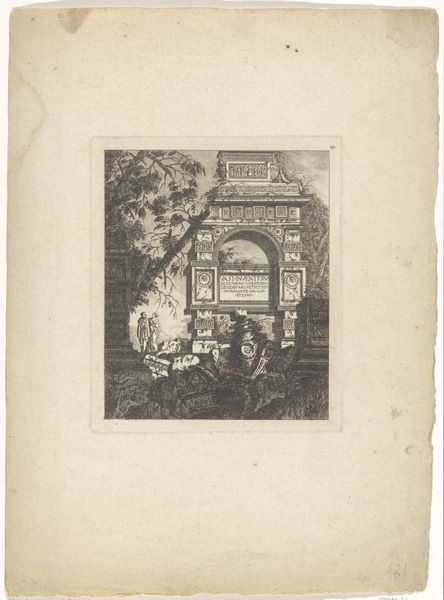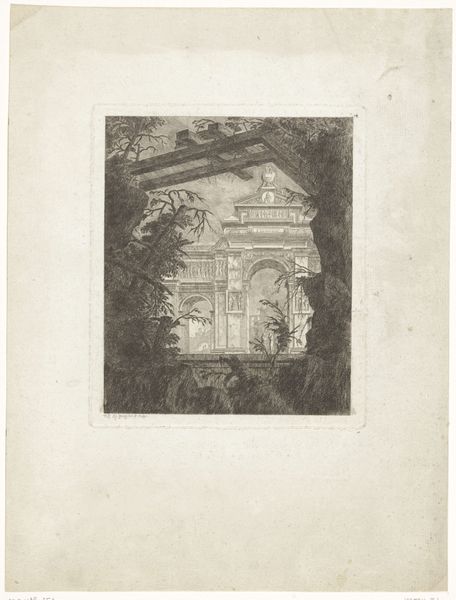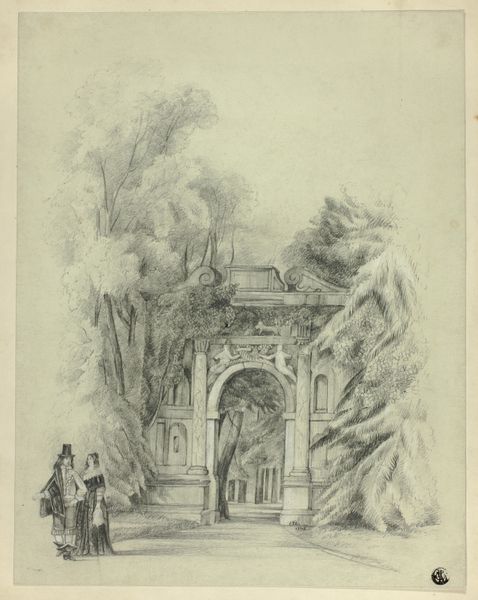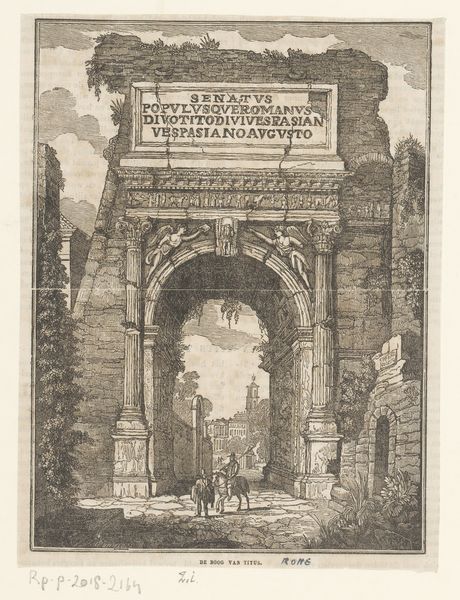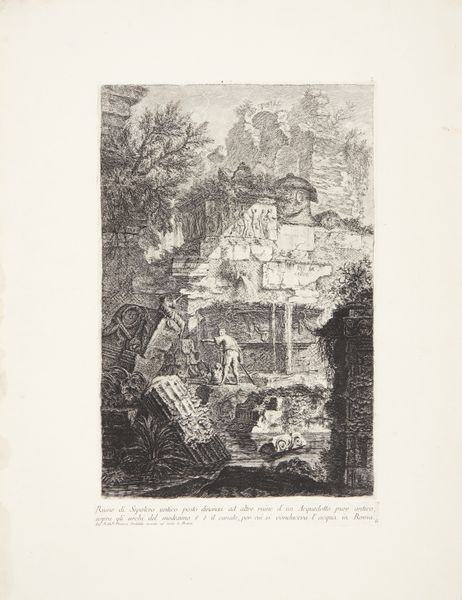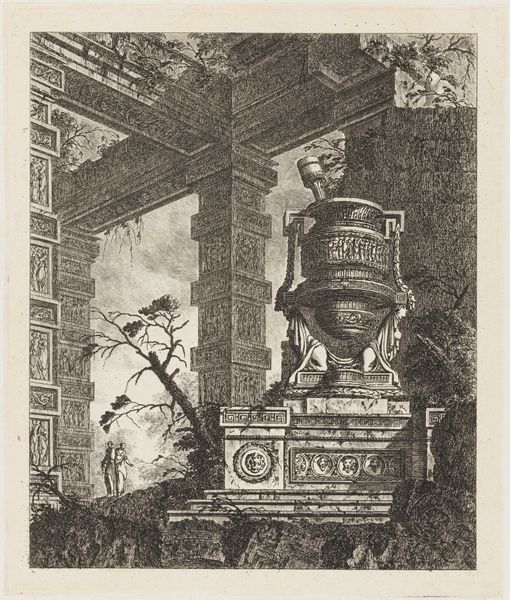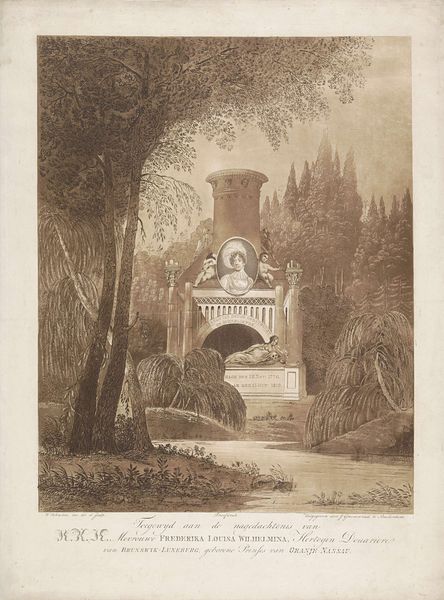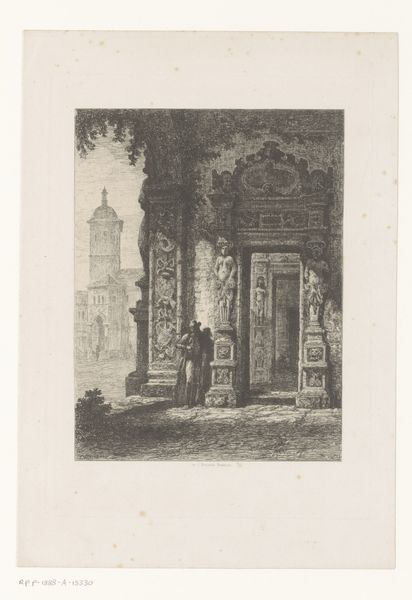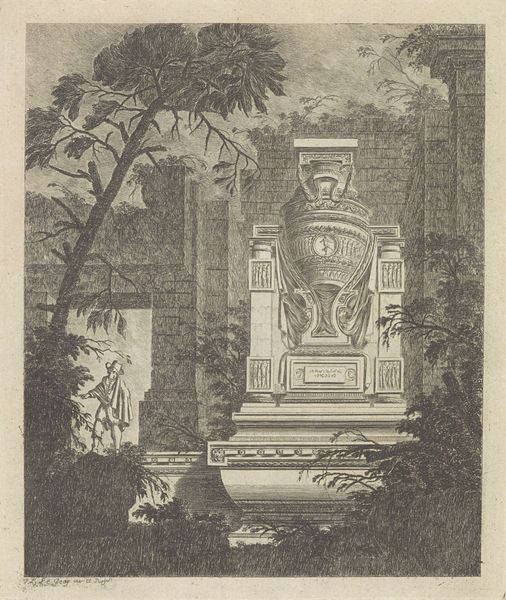
Frontispiece, plate one from Vasi Invention Possibly 1768 - 1770
0:00
0:00
drawing, print, etching, paper, engraving, architecture
#
drawing
#
neoclacissism
#
ink paper printed
# print
#
etching
#
landscape
#
paper
#
geometric
#
line
#
history-painting
#
engraving
#
architecture
Dimensions: 226 × 186 mm (image); 248 × 208 mm (plate); 309 × 228 mm (sheet)
Copyright: Public Domain
Curator: Looking at this image, I’m immediately struck by how it feels like a stage set—something grand, but also slightly crumbling. Editor: Indeed. What we're viewing is "Frontispiece, plate one from Vasi Invention" possibly created between 1768 and 1770 by Jean Laurent Legeay. The artwork is currently housed at The Art Institute of Chicago. As a print using etching, engraving and ink on paper, it perfectly exemplifies the Neoclassical movement's fascination with antiquity. Curator: I'm drawn to the detail of the line work; it’s all so deliberate. You can almost feel the pressure of the engraver’s tool on the copperplate, and the quality of paper onto which it's imprinted. Also I’m wondering, how was this kind of print distributed? Was it affordable? Editor: That's a critical point. Prints like these, due to their relative affordability, became vital tools in disseminating architectural ideas across Europe. Consider Legeay's position within artistic circles in Rome, for instance; he trained a number of influential figures, like Charles Percier and Pierre-François-Léonard Fontaine. Curator: Right, so it's not just about the final image, but also about the means through which it's disseminated—influencing architectural production, style, and even taste across social strata. You could consider this from the perspective of a design object meant for a particular class. It suggests Neoclassicism wasn’t a spontaneous eruption of style but instead one manufactured via collaborative work. Editor: Exactly. Furthermore, the very subject of the print plays a role. We're looking at a fantastic re-imagining of a Roman triumphal arch—a loaded symbol meant to broadcast the power of the empire, especially with those Roman figures off to the left adding to the grandeur. Curator: Well, examining how such Neoclassical imagery seeped into the everyday lives of individuals provides a tangible link between artistic ideals and material culture, no? We might also consider the economics of printmaking. Editor: Absolutely. In examining Legeay’s “Frontispiece”, we find how prints actively fostered the era’s fascination with classical antiquity, all whilst reflecting upon social factors underpinning its means of production. Curator: I agree; it gives me a fresh outlook to consider prints not just for their imagery, but as a distributed medium that reshaped artistic and political perceptions.
Comments
No comments
Be the first to comment and join the conversation on the ultimate creative platform.
